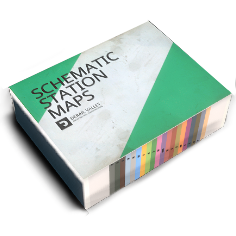Water Level/tr
When running steam engines, it is of utmost importance to maintain a nominal water level in the boiler. This is done by observing a water gauge and adjusting the water level accordingly with available controls. The water level should always be visible in the water gauge, typically ranging between 75% and 85% of the boiler height.
If water rises above the limit, there are two potential dangers - there is less room for steam to be generated in, and water can overflow into the cylinders, potentially causing them to break.
If water falls under the limit, the boiler can explode and cause catastrophic damage. If the firebox is sufficiently hot and its top surface, known as crown sheet, protrudes above the water level, it can soften from high temperatures and pressure, and lead to the boiler explosion, destroying the entire vehicle.
In an emergency attempt to save the engine from exploding, immediately feed water and dump coal from the firebox.
To feed water to the boiler from storage, there's an injector. To dump water from the boiler there's a blowdown valve. Both controls are usually found in a vehicle's cab.
Water level is also grade dependent. If a locomotive is going downhill the level will appear lower than on a flat surface, and vice versa. In case of emergency, one of the ways to prevent explosion is to dump steam from the boiler with the blowdown valve, the blower or even the cylinder cocks.
Water level is also grade dependent, and subject to sloshing. If the vehicle is going downhill, the level will appear lower than on a flat surface, and vice versa.
